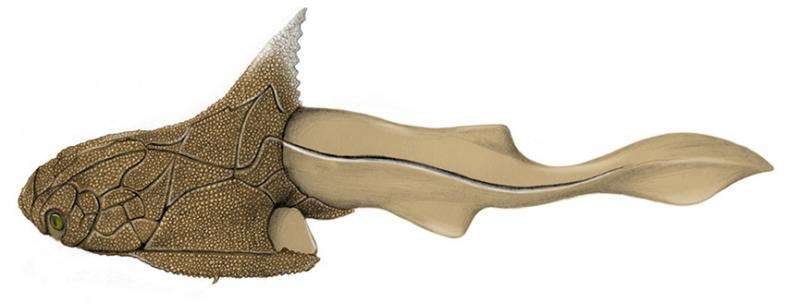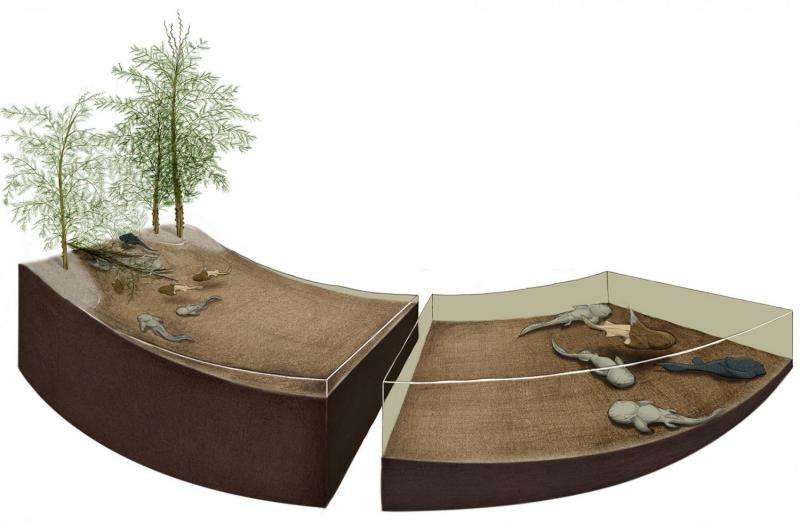Finding Nemo, Paleozoic style

As the parent of a three-year-old, I am quite familiar with the animated film Finding Nemo. These adventures of the young clownfish Nemo are of course heavily fictionalized, but the movie does present a biological reality: fish start out small, and the world can be a dangerous place for them as a result.
Fish have many ways to maximize survival odds for their offspring–they might produce hundreds or thousands of eggs in hope of a few making it to adulthood, some fish guard their offspring and ward away predators, and others might lay their eggs or give birth in sheltered habitat to provide maximal cover for the youngsters.
These kinds of behaviors are hard enough to observe for many modern fish, and are even tougher to track down in the fossil record. Barring a fish caught in the act of protecting its nest, it can take a bit of inference and careful analysis to tease out the life histories of long-dead animals.
A recently published study in PLOS ONE takes some steps towards figuring out the parenting strategies of 360 million year old fish found in Belgium. The Strud Quarry has yielded numerous bones of early vertebrates, with a particular abundance of early fish called placoderms. These heavily armored fish–only distant cousins to today's sharks and guppies–had an array of body shapes and ecological adaptations.

Sébastien Olive and co-authors on this research noted that nearly all of the individuals found for the several species of placoderms at Strud are on the small side, which is certainly consistent with them being juveniles. Size alone isn't sufficient evidence of a young age, though. Perhaps these were just small adults. So, it was particularly important that the few recovered specimens of the placoderm Grossilepis showed bone shapes and textures characteristic of juveniles, in addition to small size.
The predominance of presumed juvenile placoderms for multiple species at a single site is intriguing. Olive and colleagues suggest that Strud was thus a "nursery"–a sheltered space where young could hang out in relative safety until they grew larger and more resistant to predators. Any number of local environmental features could have contributed to this–shallow water (indicated by features of the rock in which the fossils were buried) would have kept large predators out, and fallen vegetation (indicated by numerous plant fossils) would have provided additional cover.
Although other potential placoderm nurseries have been inferred in the fossil record, this is one of the most fossiliferous ones noted to date, and the first to have multiple species at one site. Future work is needed to verify the occurrence–particularly in finding additional confirmation that all of the small animals are indeed juveniles and not just small adults–but nonetheless the Strud locality provides an important window into the life history of some ancient fish.
More information: Sébastien Olive et al. Placoderm Assemblage from the Tetrapod-Bearing Locality of Strud (Belgium, Upper Famennian) Provides Evidence for a Fish Nursery, PLOS ONE (2016). DOI: 10.1371/journal.pone.0161540
Journal information: PLoS ONE
Provided by Public Library of Science
This story is republished courtesy of PLOS Blogs: blogs.plos.org.


















